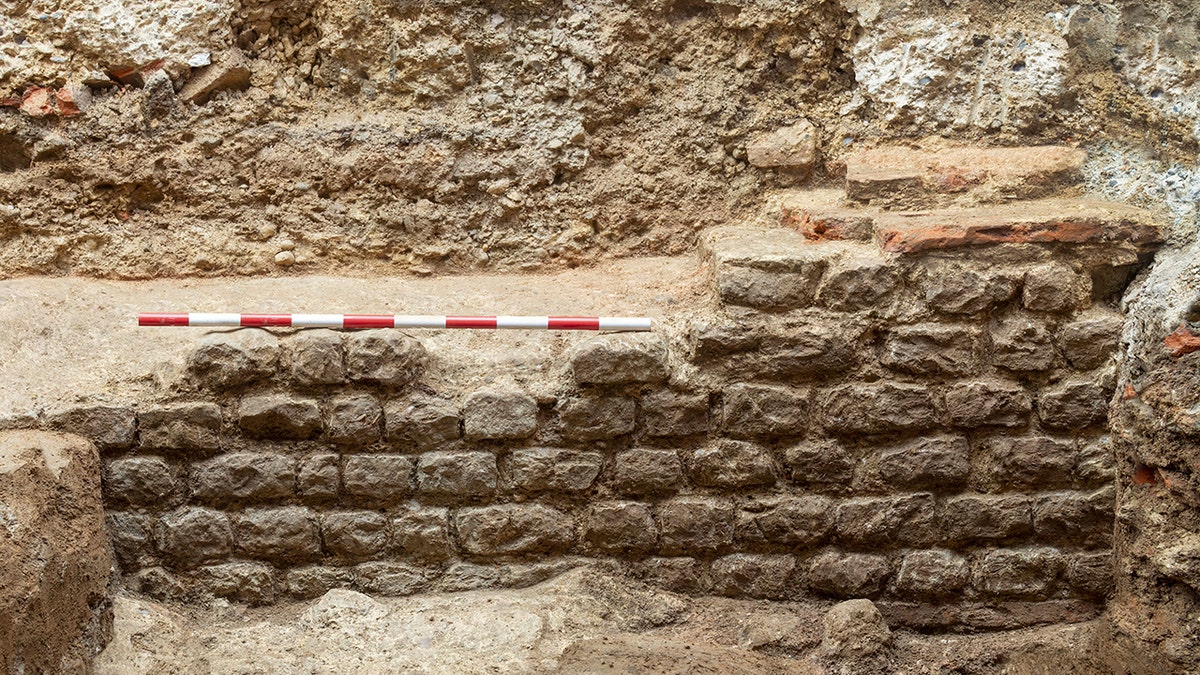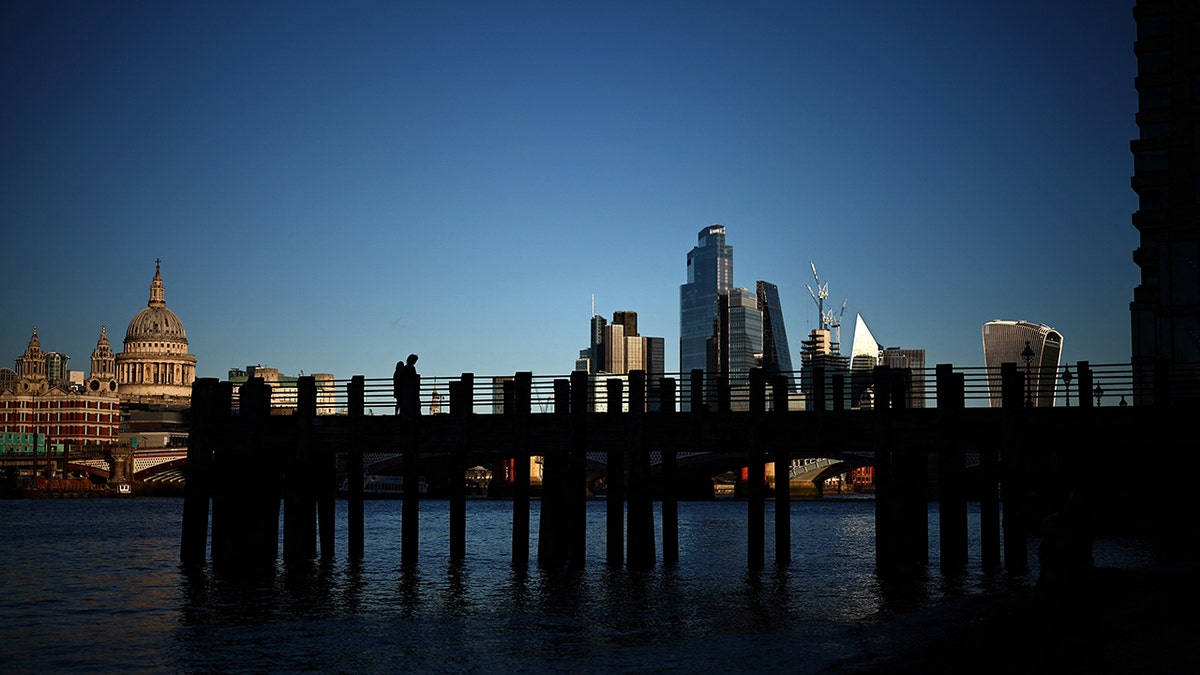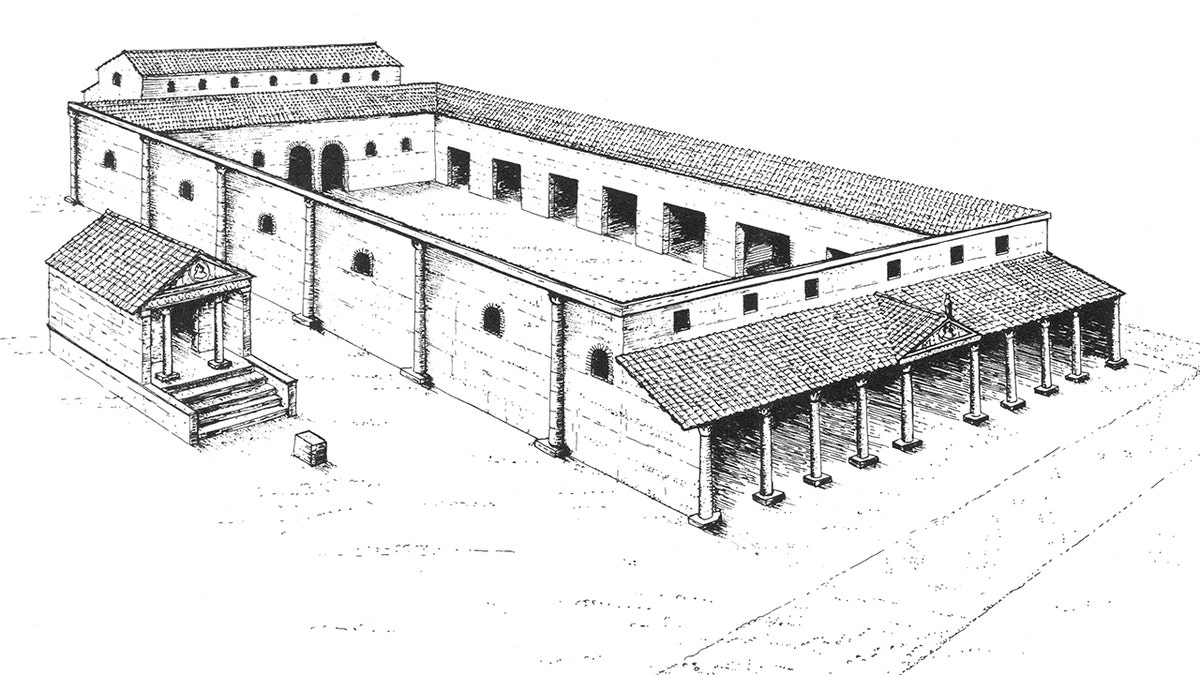Beneath the bustling cityscape of modern London, a remarkable discovery has transported archaeologists back to the city's Roman origins. During excavations at the site of a future 32-story skyscraper, the remnants of a nearly 2,000-year-old Roman basilica have been unearthed, offering a captivating glimpse into Londinium's vibrant past.
The ancient structure, believed to have been constructed between 78 and 84 A.D., served as the heart of Roman London. Located within the city's forum, the basilica was a central hub for commerce, social interaction, and political discourse.
The discovery unfolded as scientists explored the basement of a building slated for demolition. There, they uncovered the foundations of a two-story edifice, comparable in size to an Olympic swimming pool. The substantial remains included flint, brick, and ragstone walls and foundations, reaching depths of 13 feet and widths exceeding three feet.

This image, provided by the Museum of London Archaeology, showcases a section of the Roman London Basilica's wall, unearthed during the redevelopment project. (MOLA via AP)
Sophie Jackson of the Museum of London Archaeology hailed the find as one of the most significant discoveries in the City of London in recent years. This square-mile financial district represents the oldest quarter of London.
The basilica played a pivotal role in Roman London's forum, a space where citizens engaged in trade, socialized, and received political updates. Andrew Henderson-Schwartz, head of public impact at the Museum of London Archaeology, emphasized the site's historical importance, stating, "This is the heart of Rome in London, where all the decisions were made."

A contemporary view of London, showcasing St. Paul's Cathedral and skyscrapers along the River Thames. (Henry Nicholls/AFP via Getty Images)
It is also believed that the ruins encompassed a portion of the tribunal, a designated area within the forum where officials deliberated on matters of city governance.
Henderson-Schwartz further highlighted the significance of the discovery, noting, "We’re talking about the early stages of London here, but it’s a real sign of investment in the city, even in its early infancy."

An artist's rendering of the Roman London Basilica, brought to light during the redevelopment project. (Peter Marsden via AP)
Ongoing excavations hold the promise of unraveling further mysteries surrounding the original forum and its replacement with a larger structure after only two decades of use. These investigations could also provide valuable insights into the daily lives of Roman London's inhabitants.
Hertshten Properties, the site's owner, has committed to showcasing the unearthed ruins in a visitor center within the planned office tower. This decision aligns with regulations in Britain that require property developers to incorporate archaeological considerations into their planning processes.
Henderson-Schwartz aptly summarized the discovery's significance, stating, "We do have these little windows into Roman London that are all over the city. But this is really in some ways the site that connects them all together."








